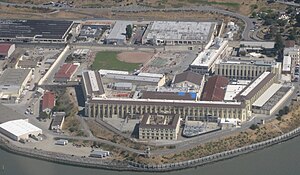- RT @MoneyMatters: Frugal teen buys house with 4-H winnings http://bit.ly/amVvkV #
- RT @MoneyNing: What You Need to Know About CSAs Before Joining: Getting the freshest produce available … http://bit.ly/dezbxu #
- RT @freefrombroke: Latest Money Hackers Carnival! http://bit.ly/davj5w #
- Geez. Kid just screamed like she'd been burned. She saw a woodtick. #
- "I can't sit on the couch. Ticks will come!" #
- RT @chrisguillebeau: U.S. Constitution: 4,543 words. Facebook's privacy policy: 5,830: http://nyti.ms/aphEW9 #
- RT @punchdebt: Why is it “okay” to be broke, but taboo to be rich? http://bit.ly/csJJaR #
- RT @ericabiz: New on erica.biz: How to Reach Executives at Large Corporations: Skip crappy "tech support"…read this: http://www.erica.biz/ #
Playing For Blood
Kris at Every Tips and Thoughts wrote a post about games and letting her kids win feeling bad about winning. I disagree. This post is an expansion of my comment there.
When we play games in my house, we play for blood. I’ve never let my kids win and they know it. From the first time the kids attempt Memory, they know they’ve got to earn a win against Mom and Dad. They know if they lose, they must do so gracefully. If they pout or cry, they lose game privileges for a while. I demand good sportsmanship, win or lose.
To be clear, my kids are 3, 4, and 11 and they are all held to the same standards of sportsmanship. Win or lose, they will do so gracefully. There will be no temper tantrums when they are Sorry’d and no pouting when the Queen is captured.
It took my son almost 3 years to beat me at chess. When it finally happened, he was almost as proud as I was and still talks about it 5 years later.
It’s not much fun playing games with his friends. They were coddled and expect to win everything. I have to take away game privileges just like I do for my 3 year old. They hate that because we have the coolest board games. Nobody else has games that involve zombies or disembodied brains.
What has the result been?
My kids love playing games. This week, my oldest has been teaching his sisters how to play Life. When he visits his friends, he’s as likely to bring a board game as an electronic game. He’s got a good mind for strategy, and I can’t remember the last time he pouted when I tromped him.
My 4 year old hasn’t mastered gamesmanship yet, but she will. When I threaten to put the game away, she wipes her eyes, and keeps playing, even if her jaw is chattering. She knows what is expected and works to live up to it.
Both of the older kids are competitive. They’ve never had a win handed to them, and they have each had wins they had to work for, and they know how it feels to win and earn it.
The youngest doesn’t care if she wins, she’s just happy to play. In my experience, the competitive gameplay gene doesn’t activate until 4.
In my mind, the real world won’t hand them any wins, so I might as well start teaching them how to work for it now.
How about you? Do you let your kids win, or do you teach them that all games are bloodsports?
Protection for your Loved Ones

This is a guest post.
Life cover insurance acts as a safety net to pay for a family’s expenses should a wage earner become critically ill or die prematurely. Life cover includes life insurance as well as disability, critical illness, mortgage and income protection insurance policies.
Importance of life cover insurance
In most families, at least one adult is a wage earner and uses their income to pay for necessities such as food, clothing and rent or mortgage. If the wage earner becomes disabled, too ill to work, or dies, life cover insurance can pay for these expenses.
Stay-at-home parents provide valuable, though unpaid, services to the family. Without that person, the family would have to pay for childcare, household upkeep, errand running, and every other chore the stay-at-home parent did. If the stay-at-home parent has life insurance, these expenses can be covered.
Life cover insurance can pay off mortgages and education loans.
Live cover insurance policies will pay funeral costs, which can be substantial.
Family owned businesses can be insured and protected if the owner dies.
Objections
Life cover insurance is too expensive.
Insurance companies have plans to suit every budget and life circumstance. While young and healthy adults will generally receive the most affordable policies, older adults have plenty of reasonably priced options as well.
Disability or severe illness is unlikely.
Actually, 32% of men and 25% of women, ages 40 to 70, will experience a critical illness or disability. http://www.healthinsuranceguide.co.uk/statistics_mainbody.asp
Discussing disability or death is awkward and uncomfortable.
Agreed, but avoiding the topic puts loved ones into economic jeopardy. Without the wage earner’s life cover, a family could lose their home and have to lower their standard of living.
Variety of life cover insurances
Life Insurance
Term insurance is a protection policy, paid for during a specific time period (term), and is active during that time only. Permanent, whole, variable, universal and universal variable life insurance policies all are investment policies. They combine a death benefit (the amount paid out when the insured person dies) with an investment account. Licensed and experienced life insurance agents can help individuals make the best choice for their life situation.
Critical Illness/Disability Insurance
This type of insurance pays for living expenses if a person is diagnosed with a serious illness or disabled and can no longer work.
Mortgage Insurance
This is paid when the mortgage owner dies. This could help prevent the surviving family from having to sell the home.
The time to buy life cover insurance is now!
A 2010 survey (http://www.prnewswire.com/news-releases/ownership-of-individual-life-insurance-falls-to-50-year-low-limra-reports-101789323.html) stated that individual life insurance ownership was at a 50 year low in the United States. An estimated 35 million (30% of households) Americans do not have life insurance, and 11 million of these households have children under 18. Already living paycheck to paycheck, any debilitating injury or death of a wage earning adult could spell financial disaster to the family. Buying life cover insurance is a vital part of caring for loved ones. Just as a wage earner provides a home, food and daily necessities for their family, life cover insurance can take over and provide for the family if the wage earner unable to do so.
Expensive Cheese
Saturday morning, I woke up to a room-temperature refrigerator. I dislike drinking milk that’s 40 degrees warmer than I’m used to.
We called the repairman who showed up at 9PM and poked around in the fridge for a bit before announcing that he didn’t have the needed parts in his truck.
The parts came Monday. The next repairman got there Tuesday afternoon. For those of you keeping track at home, that’s nearly 4 days without a refrigerator.
That poor bacon.
Tuesday’s repairman didn’t think highly of Saturday’s. Apparently, the two parts Saturday ordered never go bad at the same time, so he was guessing.
He also didn’t notice the slice of individually wrapped American cheese that had slipped between a shelf and one of the cold-air vents, preventing any air flow at all.
Grr.
I wish I would have noticed that on Saturday. I now own the most expensive cheese in the world. It’s not Pule, which comes in at $616 per pound. This lowly slice of American cheese cost me nearly $200. At one ounce per slice, that’s $3200 per pound. Of course, I’m counting the lost food. My hamburger, eggs, bacon, milk, and mayonnaise are gone, along with every other perishable bit of food we had on hand.
I don’t know how much the repairs cost. Saturday’s visit, minus the parts, was billed at $95. I didn’t see the total for Tuesday’s visit.
We pay for a repair plan through our gas company. For around $15 per month, we get a list of appliances protected. We don’t have to worry about our washer, dryer, water softener, stove, refrigerator, or our sewer main. Assuming Tuesday’s visit was billed the same as Saturday’s, this one repair paid for the plan for an entire year. When you count our sewer main–which backs up with tree roots once a year and costs at least $200 to fix–the repair plan is definitely worth it for us.
When we get tenants in my mother-in-law’s house, we’ll have the repair plan set up there, too.
Do you use any kind of repair plan? How is it working out for you?
The High Cost of Keeping Richard Ramirez in Prison

Serial killers in the United States often gain cult status due to their strange courtroom antics and dramatic personalities. Recently deceased death row inmate Richard Ramirez was definitely one of the most famous serial killers of all time before he passed away of liver failure in California’s San Quentin State Prison.
After a dramatic arrest in 1985 in East Los Angeles by residents who recognized Ramirez from photographs displayed all over the news, Ramirez would sit in jail for years while awaiting a trial that finally began in 1989. There would be no more expensive trial in the history of Los Angeles County except for the O.J. Simpson trial that occurred a few years later.
At a cost of $1.8 million dollars, Los Angelinos would pay dearly for the privilege of trying Ramirez in a court of law. Incredibly, however, this massive sum wasn’t the only cost associated with this vicious serial killer. Because he was sentenced to death and due to the incredibly long appeals process associated with death row inmates, Ramirez sat in jail for over two decades without any fear of actually being put to death by the state of California.
Over the past hundred years, the number of individuals incarcerated in the United States has ballooned from a few hundred thousand people to almost 2.5 million prisoners. The most expensive people to incarcerate are death row inmates, who sit in a type of solitary confinement for decades. A moratorium on future executions in California has ensured that inmates like Ramirez have been costing taxpayers millions of dollars for housing and appeals with no likelihood of being put to death.
According to the American Civil Liberties Union, there are around 700 people sitting on death row in California, which require a massive investment of tax dollars. The state’s ongoing budget crisis and inability to balance its budget has put great strain on the prison system to house so many death row inmates at such an incredible cost.
Richard Ramirez’s untimely death at the age of 53 and his decades-long residency within a state prison brings to light a disturbing fact: more inmates die of natural causes while on death row than are actually put to death. Whether support for the death penalty exists or not, the billions of dollars spent by the state to keep inmates on death row has resulted in just 13 executions since the late 1970s.
A study in 2011 that was conducted by a judge and professor in the state suggested that California has spent over $4 billion since the death penalty was reinstituted. Out of those funds spent, at least a billion dollars was used for housing and incarceration of the inmates, including serial killers like Richard Ramirez.
A further study presented by the Commission on the Fair Administration of Justice in 2008 suggested that keeping the system intact with inmates on death row would cost around $137 million dollars a year. On the other hand, if California was to commute those death sentences to life in prison and abolish the death penalty, the yearly cost would drop to $11.5 million a year.
Offering the families of victims of death penalty-worthy crimes the chance to see a killer or other criminal experience the ultimate punishment may offer some sort of closure. Unfortunately, with the expectation that individuals on death row are more likely to die of natural causes than be put to death in California, the implementation of the death penalty in the state must be reexamined.
Related articles
How Much Does It Cost to Fight the Yosemite Fire?

The summer of 2013 has proven to be a destructive one. Brush fires have engulfed much of the Western United States, consuming large forests and chasing citizens out of their homes. The fire known as the Rim Fire is closing in one the Yosemite National Forest, one of the most popular tourist destinations in the country.
Managing forest fires in the Western United States has been a consistent struggle over the decades with budgets proving to be hard to navigate around for local, state, and federal firefighting forces. Around 32,000 individual brush fires across California and other western states has resulted in the destruction of 3 million acres of land. To battle these blazes, the U.S. Forest Service, a federal office, contracts with private, state, and local firefighting agencies by providing funding, equipment, resources, and the chemicals needed to stop the blazes. On August 19th, 2013, the U.S. Forest Service has used $967 million to fund the management of these fires. At that time, the U.S. Forest Service only had $50 million left in its budget.
Why is the budget so affected this year compared to other years? For example, in 2012, the total amount of forest fires the U.S. Forest Service answered to totaled to around 67,700 fires and the destruction of 9.3 million acres of land. However, budgetary choices made by the Congress over the decade have made available funds for the U.S. Forest Service hard to find. In addition, the budget sequester, which went into effect this budget year, subtracted $115 million from federal wildfire management programs.
In addition, individual states are seeing their state budgets affected. California had to declare a state of emergency on August 23rd, 2013. One example of a damaging effect to California included the Rim Fire destroying much of the infrastructure near the Hetch Hetchy Resovoir, which supplies water and hydroelectric power to much of San Francisco. As a result of the damage, the city of San Francisco and neighboring municipalities that use the same energy source, spent over $600,000 in replacement water and energy. Private costs are also immense; thousands of homes and private property have been destroyed across the west, including from the Rim Fire. The Rim Fire near Yosemite threatens the national park, the metropolitan San Francisco area’s water and energy supply, and the major municipalities near. By August 25th, 2013, 143,980 acres near Yosemite National Park have been engulfed by the Rim Fire with only 7% of the fire contained. The Rim Fire is approximately 20 miles away from Yosemite National Park and although Route 120 heading into the park is closed, park officials are hopeful that the park will not be affected by the fire thanks to its current distance. If the Rim Fire expands to the Yosemite National Park, the costs for the U.S. Forest Service from the fire damage and trying to contain the fire could catapult higher.








